When palm oil prices surged 12% in 2024 and retreated, traders on Fintevex’s pro-grade trading terminals profited from the pullback. Mean reversion trading bets on prices returning to their average after extreme moves, ideal for volatile assets like MYR pairs, Bursa Malaysia equities, digital currencies, and commodities. This step-by-step blueprint outlines a path to implement mean reversion, leveraging smart market analysis and lightning-fast execution. Trading involves risk, and this guide empowers traders to assess, strategize, and execute effectively.
Step 1: Mean Reversion Basics
Mean reversion assumes prices revert to historical averages after deviations. In 2024, palm oil futures dropped 10% post-rally, returning to their 20-day mean (MPOB). Fintevex’s real-time market data helps identify overextended moves, enabling precise timing in volatile markets.
Step 2: Spotting Reversal Signals
Tools for identifying reversals include:
- RSI: Above 70 or below 30 signaled 1.5% MYR/USD reversals (OANDA, 2024).
- Bollinger Bands: Palm oil prices outside bands reverted 8% (MPOB).
- Moving Averages: 20-day deviations in equities reverted 5% (Bursa Malaysia).
- Volume Analysis: Low volume on digital currency surges confirmed 10% pullbacks (CoinGecko).
- Stochastic Oscillator: Overbought MYR signals led to 1.2% gains (OANDA).
Fintvex’s charting tools enhance signal accuracy.
Step 3: Applying Mean Reversion
Mean reversion thrives across:
- Currencies: MYR/USD reverted 1.5% post-rate spikes, RSI-guided (OANDA).
- Digital Currencies: 15% surges pulled back 10% after regulatory news (CoinGecko).
- Bursa Equities: Banking stocks reverted 4% post-earnings (Bursa Malaysia).
- Commodities: Palm oil dropped 8% after supply shocks (MPOB).
- Tin Futures: Reverted 6% post-monsoon supply updates (LME, 2024).
Fintvex’s real-time data supports these applications.
Step 4: Building Reversion Strategy
A robust strategy includes:
- RSI Entries: Buy MYR/USD below RSI 30, sell above 70 (OANDA).
- Bollinger Band Trades: Sell palm oil outside upper bands (MPOB).
- Hedging: Use options to protect against failed reversals.
- Risk Control: Cap leverage at 10:1 with flexible margin trading.
- Confirmation: Use volume, stochastic oscillators for validation.
- Position Sizing: Adjust based on volatility.
Fintvex’s platform ensures precision.
Step 5: Reversion Success Stories
In 2024, a trader caught a 1.5% MYR/USD reversal with RSI (OANDA). Another profited 10% on digital currency pullbacks (CoinGecko). A Bursa equity trader gained 4% post-earnings (Bursa Malaysia). A palm oil trade using Bollinger Bands yielded 8% (MPOB). A tin futures trade captured 6% post-supply data (LME). A failed digital currency reversal cost 5% without volume confirmation (CoinGecko), highlighting validation’s importance.
Step 6: Reversion Risks, Challenges
Risks include:
- Failed Reversals: 10% of digital currency trades trended further (CoinGecko).
- Volatility Risk: MYR moves led to 3% losses (OANDA).
- Costs: Frequent trades raised fees by 2% (regional regulator).
- Timing Errors: Early entries missed 6% palm oil gains (MPOB).
- Indicator Overreliance: RSI alone caused 4% errors (OANDA).
Avoiding Failed Reversals
Combine RSI, volume, Bollinger Bands using Fintevex’s tools.
Managing Costs, Timing
Optimize trades, use tight stop-losses for precision.
Step 7: Advanced Reversion Techniques
Pair RSI with stochastic oscillators for 2% MYR/USD reversals (OANDA). Volatility-adjusted sizing in palm oil boosted win rates by 8% (MPOB). Options hedging mitigated 5% equity losses (Bursa Malaysia). Sentiment analysis during digital currency pullbacks added 10% gains (CoinGecko). Staggered entries in tin futures caught 7% reversals (LME). Fintevex’s backtesting refines strategies, though past performance does not guarantee results.
Step 8: Reversion Trading Tips
To succeed:
- Use Indicators: RSI, Bollinger Bands for signals.
- Monitor Events: Track supply, policy updates (Reuters, 2024).
- Execute Precisely: Use lightning-fast execution.
- Cap Risk: Risk 1–2% per trade, limit leverage.
- Diversify: Trade MYR pairs, equities, palm oil, tin.
- Journal Trades: Track outcomes to refine strategies.
- Stay Updated: Follow regional news.
- Practice Patience: Wait for confirmed signals.
Step 9: Fintevex’s Reversion Tools
Fintvex’s charting tools visualize RSI, Bollinger Bands, and stochastic oscillators, real-time data tracks events, and lightning-fast execution ensures timely trades. The mobile platform supports trading anywhere, ideal for volatile reversals. Backtesting refines strategies.
Step 10: Regional Reversion Dynamics
In export-driven economies, palm oil and MYR revert after supply or policy spikes. Bursa Malaysia equities see reversals post-earnings, driven by overreactions. Fintevex’s smart market analysis optimizes these opportunities.
Step 11: Compliance, Risk Disclosure
Trading involves risk, and mean reversion does not guarantee profits. Historical data does not predict outcomes. Traders must research, align with goals, and comply with AML and KYC via Fintevex’s verification. Outcomes depend on market conditions.
FAQ
What is mean reversion trading?
Mean reversion bets on prices returning to averages.
How does Fintevex support it?
Fintvex’s pro-grade terminals offer charting, lightning-fast execution.
Does it guarantee profits?
No, risks like failed reversals persist. Use risk management.
Which assets suit it?
MYR pairs, digital currencies, equities, palm oil, tin.
How to start on Fintevex?
Join, use charting tools, execute with real-time data.

















